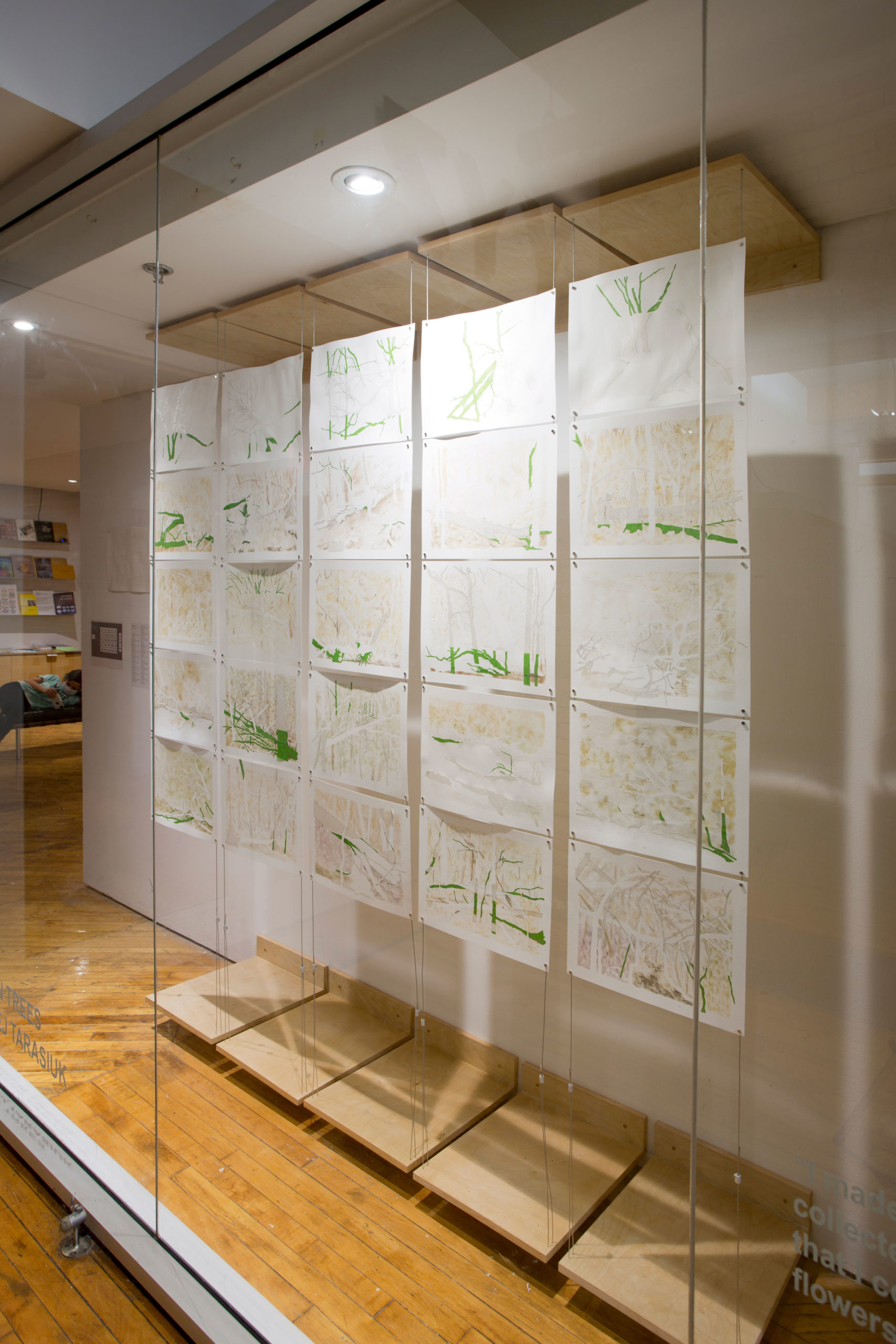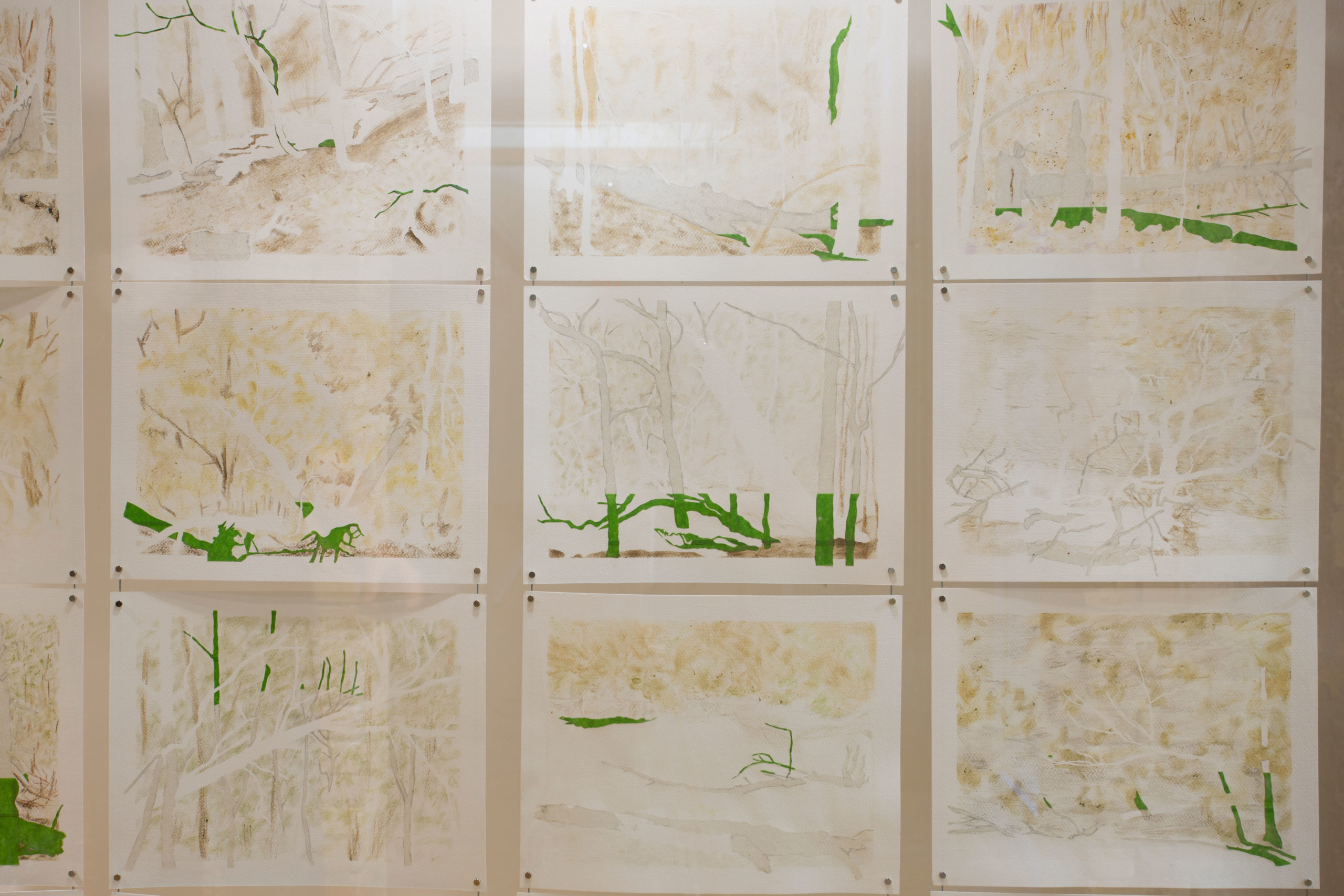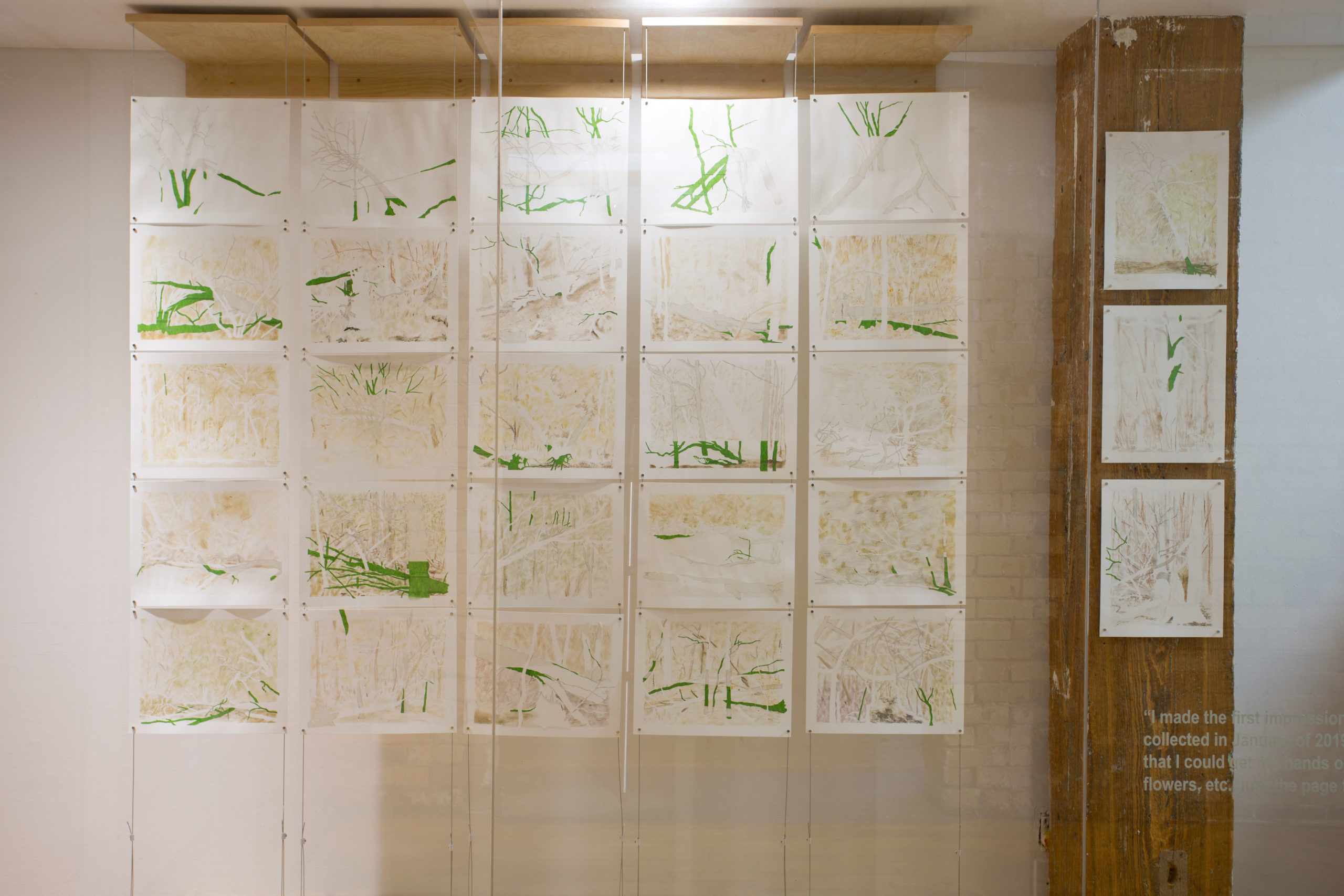(Edited from: “Hinting at a silhouette, a shape of reality defined through relationships” essay)
Back in Toronto, I continued to document a particular curve of the Etobicoke Creek ravine whose layers of sediment accumulated 450 million years of time (Upper Ordovician Georgian Bay Formation). On these regular visits I became interested in the broken trees scattered along the paths. They made for great subjects visually, and conceptually they spoke to an ecosystem in transition. Being interested in ecosystem services as a way to think about landscape as a collection of relationships between processes the broken trees exemplified a mechanism of secondary succession. Spending time with them made me think about the role failing plays in growth, environmentally and in our personal life. I thought about resilience, seeing new shoots fanning out from trunks that were broken and contorted. I thought about the spirit of the forest sitting at a base of a particularly impressive husk; sharp spikes of broken branches crowning a thick maple trunk whose top half broke off years ago. I thought about my mother and the cancer she was enduring. Being amongst the trees helped. They spoke to the ravine’s recent past and its present moment as markers for the ongoing change taking place here, a place where the new and the primordial interacts.
I made the first impression print using creek water collected in January of 2019. Working in winter, I drew a stencil of a broken tree on-site, returning to the studio to cut it out and apply the water in multiple layers. Removing the stencil left a faint image of the broken tree I wanted to capture. The water did not have as strong a residue as some of the other river waters I used in my previous series.
To give the next tree a stronger graphical presence I left parts of the stencil as part of the finished work. Doing so made the print pop and gave the work a deeper sense of depth. It illustrated the interaction between nature and manufacture and its unfinished quality fit the idea of landscape as continually developing. Moving forward all the prints in the series made use of this technique.
With the arrival of spring I had an opportunity to visit my sister in Barcelona. While there I made a series of “Impressions” depicting parts of the city where natural and human systems interacted. My first piece used salt water from the Balearic Sea. It depicts a wave breaker line protecting human made beaches that mark Barcelona’s coast. The residue turned out to be very faint here also with the added bonus of salt crystals sparkling faintly. For the second piece I decided to try to use the water from Rio Besos, a river bordering the east side of the city. On the way through the hills I came across an impressive formation of the Opuntia cactus (Prickly pear) growing on a small ridge of sun baked red clay. Having finished the stencil and not having any water in the vicinity I used a chunk of a cactus pad smearing its wet insides onto the page which left a faint green residue. Thinking back to how I used the Amazonian clay a year back during the LABVERDE residency, I stuck a piece of red clay into the jelly and began to rub with it. The effect was wonderful as the combination behaved almost like an oil stick. The red colour and texture of the clay opened me up to experimenting with what else I could use from the places I was portraying in their depiction.
Returning to Toronto, I started using everything that I could get my hands on, bark, mud, leaves, shale, flowers, etc. for the rest of the “Broken Trees” impressions. In the process of making the work I thought about how earlier humans rubbed organic material into walls to depict their landscape. Now we use these traces to see how far our species reaches back in time. Coming from a place where deep time is so accessible these prints speak to the present version of the Etobicoke Creek valley as its being shaped by natural systems and generations of humans leaving their marks on it. They retain a sample record of what could be found there at that time of their creation. As things continue to change they can serve as a marker to gage the direction of the change we have chosen.
This is its first public presentation.
Artist Bio
Andrzej Tarasiuk
Andrzej Tarasiuk is a Polish-Canadian artist living in Toronto. After earning a diploma in Drawing and Painting from the Ontario College of Art and Design in 2005, he pursued a variety of projects from street vending to impromptu sculpture-installation. By exploring ways of connecting with people outside traditional art institutions led him to focus on the idea of change. He returned to OCAD University to sharpen his ideas by finishing a Bachelor of Fine Arts in 2014. During this period he developed an interest in creating work about the human relationship with the environment. He attended two self-directed residencies: Un poco del Chocó – Nature Reserve and Biological Field Station in Ecuador, and Esperanza Verde wildlife and forest conservation project in Peru’s Amazon basin. The residencies had a positive impact on the evolution of his ideas and work. In 2018, he explored “connection(s) between science, art and the natural environment” at LABVERDE, a Brazilian residency in the Amazon rainforest; developing and presenting his work at the Proyecto’acePIRAR residency in Buenos Aires, Argentina. In 2020, he completed and exhibited new work at the Owl Ridge Acres residency in Bancroft, Canada and Corazon residency in La Plata, Argentina. In 2020 with the support of the Ontario Arts Council he installed and documented “Biotic / Mechanic Pump V.2” an immersive video installation at Ed Video Media Arts Centre. In 2022 at RaumArs in Suomi (Finland), he will collaborate with the community developing art about possible futures of the human relationship with nature.
His interest is in the role perception plays in constructing reality and how that reflects on our relationship and understanding of the environment. Looking at our surroundings through the lens of process, his work attempts to connect the visible features of an area with the natural and human processes which give it shape. He strives to convey the dynamic nature of place, not as a collection of individual elements but a complex interrelated network of relationships of which we are a part of.





